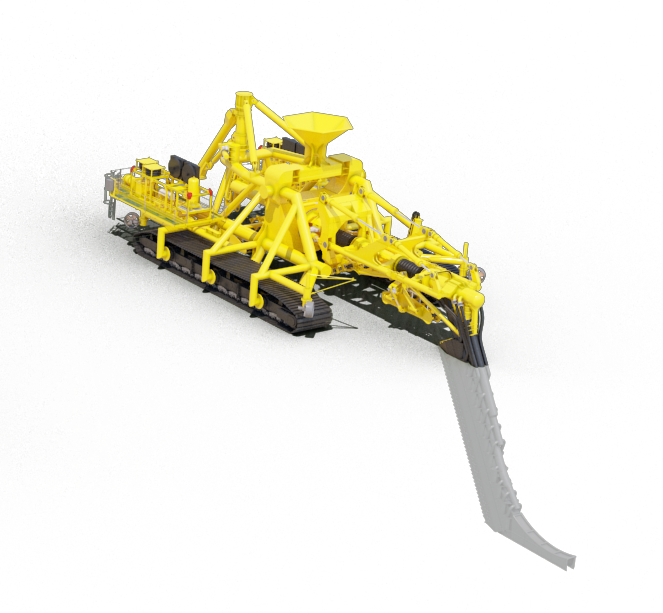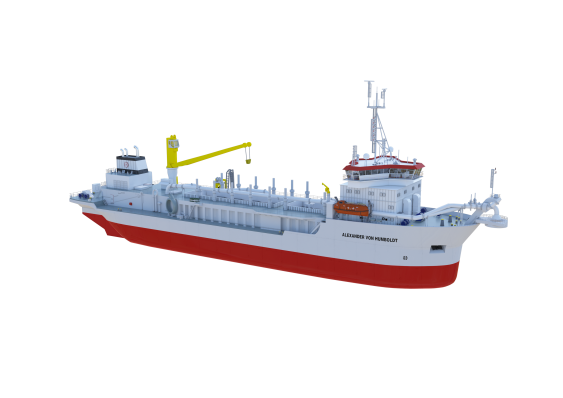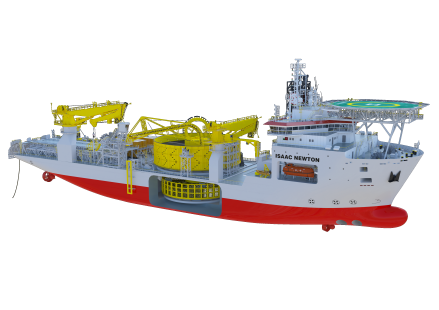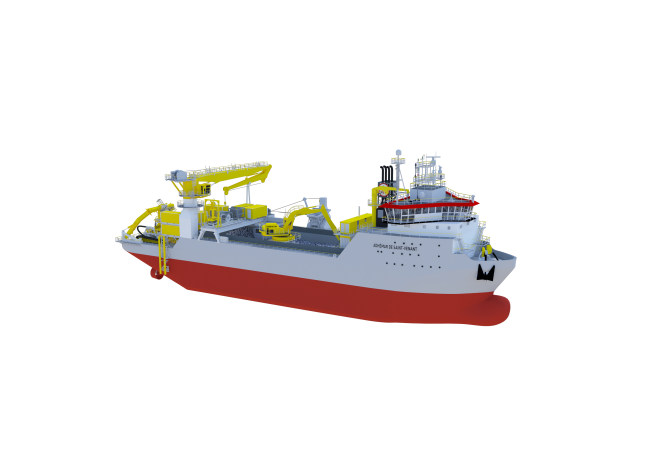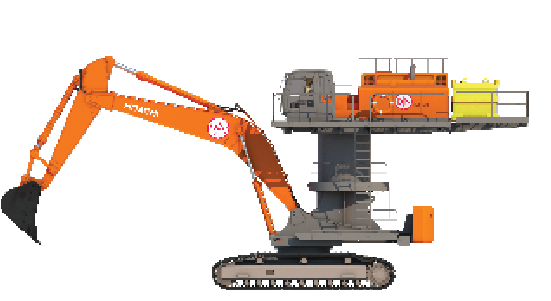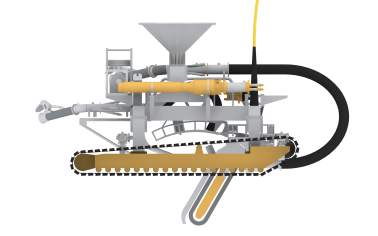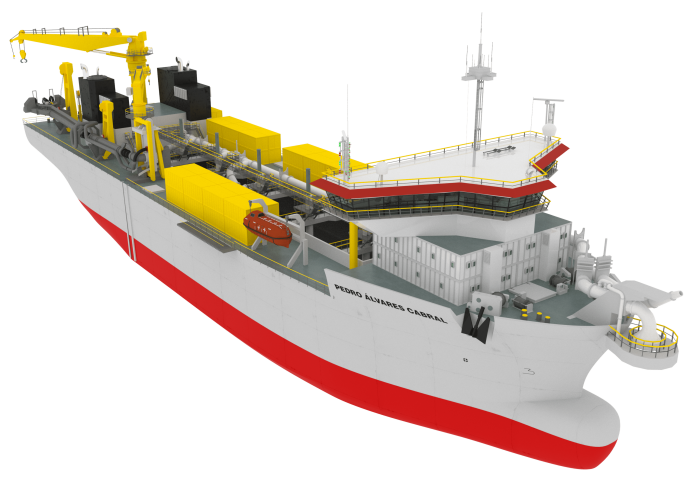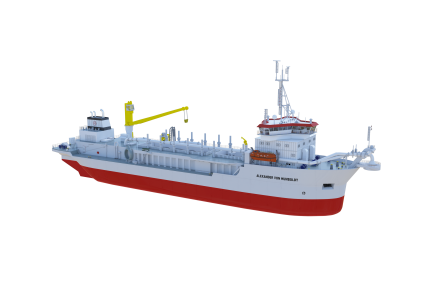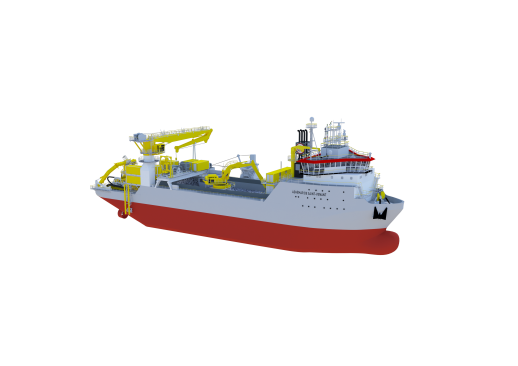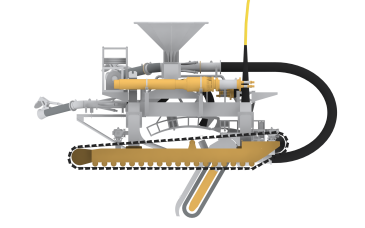

GIANTS

Looking for a partner to realise your offshore cable projects?
Contact our Senior Commercial Manager
Bart Moens


DC cables, however, support higher power and present less loss. They are therefore more suitable for bridging long distances. And since wind farms will be built further and further out to sea and as we increasingly connect the power grid between countries, the installation of DC cables as interconnectors and export cables will become more common and important.
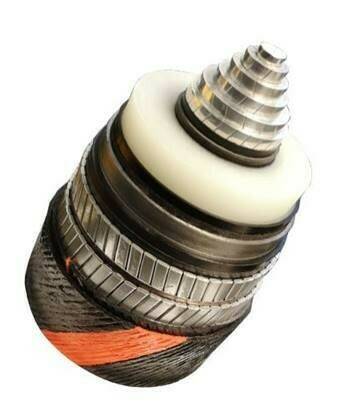
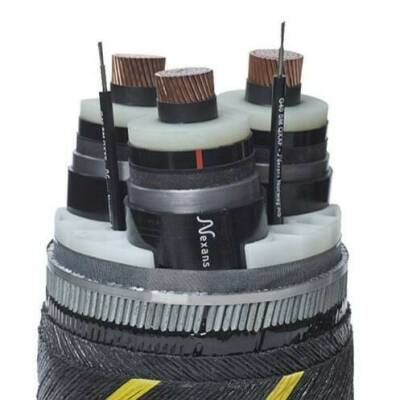

Did you know that...
... all three Red Giants are equipped for their core activity, but could perfectly perform other missions as well? The Isaac Newton could be converted into a rock installation vessel, the Connector can operate as a heavy-lift vessel and the Symphony could operate as a cable-laying vessel with a cable carousel. Nonetheless, with the cable installation industry in full swing, converting these vessels is currently not on our agenda.

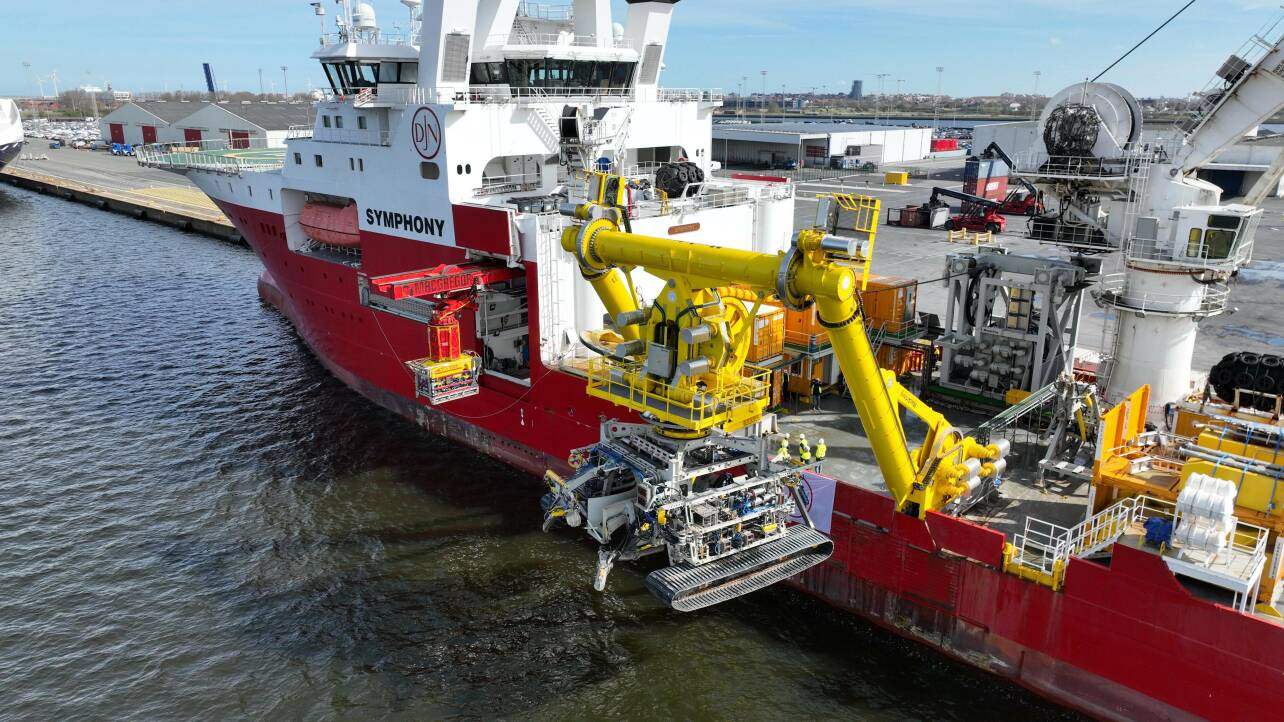

Dynamic positioning:
This computer system helps the vessels to stay in one spot, despite waves or difficult weather conditions. Sensors, compasses and satellites feed the system with information so it knows exactly what force is needed to keep the vessel on station.
Cranes equipped with active heave compensation:
This technique closes the gap between the moving vessel and the stationary world. It enables heavy lift operations with extreme precision in all weather and sea conditions.
Underwater robots:
Each vessel is equipped with one or more robots to closely monitor and manage all underwater operations.


The Isaac Newton can carry as much as 10,500 tonnes of cables in one trip, or the weight of about 580 city buses.
We do not stop at laying cables. We also take care of protecting them from fishing activities, anchors or other possible ‘threats’ by burying them in the seabed. This is exactly where the Symphony, the latest addition to our fleet, comes in. The Symphony is a trenching support vessel and the home base to our subsea trencher Swordfish. This trencher will be launched from the Symphony into the water to bury cables up to several metres deep in the seabed. Thanks to the Symphony, we can separate cable laying from trenching, which usually takes longer, and continue both activities in parallel at all times.
Certainly living up to the name of Red Giant is our cable-laying vessel Connector. This vessel entered our fleet in 2020 in response to the booming market of cable installation projects. With her cargo deck the size of half a football field and her ability to operate in waters up to 3 kilometres deep, the Connector was the perfect addition to our fleet.
As our first vessel designed from the start as a cable-laying vessel, the Isaac Newton holds a special place in our fleet. The vessel was completely designed by us and was ready for action in 2015. Since then, the Isaac Newton sailed through a lot of international waters to complete impressive subsea cable projects. Clients in the Netherlands, Greece, Germany, and Iceland, to name just a few, all counted on our Isaac Newton to bring renewable energy to land.


AC cables are a common technology to connect wind turbines with each other or with the mainland, as long as distances are not too long.
Our cable installation fleet is perfectly equipped to install both AC and DC cables. Yet it is the installation of DC cables that sets us apart. This market is severely limited in terms of installers, but essential to create a stable and global energy grid.
Early April, three vessels of that fleet, the Isaac Newton, Connector and Symphony, were docked together in the port of Zeebrugge. A perfect time to take a closer look at these three Red Giants.
Think of offshore energy and the chances are a wind farm at sea comes to mind. Rightfully so, because with a tip height of 270 metres and more, wind turbines at sea are quite a sight. Yet, wind farms are only a small piece of the puzzle in the energy transition. Buried underground, deep in the seabed, the huge multi kilometre-long cables that bring the offshore electricity ashore are just as important.
For ten years now, Jan De Nul has been an expert in the offshore cable industry. With numerous targeted investments, we built a leading cable installation fleet.
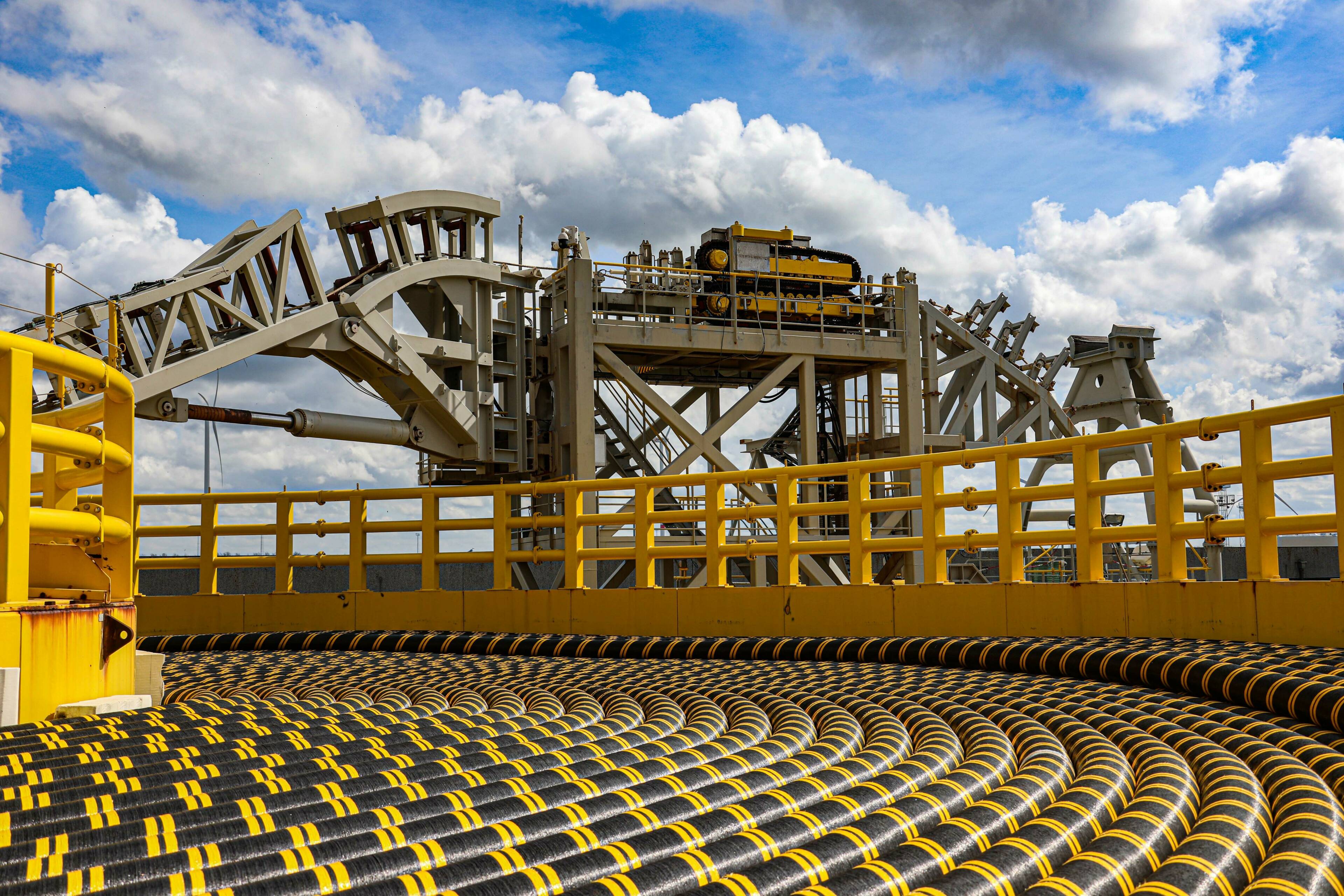


GIANTS


Looking for a partner to realise your offshore cable projects?
Contact our Senior Commercial Manager
Bart Moens



DC cables, however, support higher power and present less loss. They are therefore more suitable for bridging long distances. And since wind farms will be built further and further out to sea and as we increasingly connect the power grid between countries, the installation of DC cables as interconnectors and export cables will become more common and important.
AC cables are a common technology to connect wind turbines with each other or with the mainland, as long as distances are not too long.
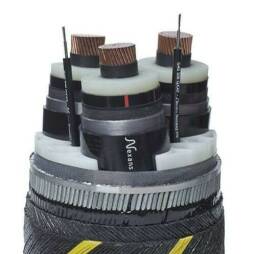
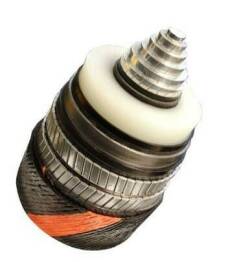
Our cable installation fleet is perfectly equipped to install both AC and DC cables. Yet it is the installation of DC cables that sets us apart. This market is severely limited in terms of installers, but essential to create a stable and global energy grid.




Did you know that...
... all three Red Giants are equipped for their core activity, but could perfectly perform other missions as well? The Isaac Newton could be converted into a rock installation vessel, the Connector can operate as a heavy-lift vessel and the Symphony could operate as a cable-laying vessel with a cable carousel. Nonetheless, with the cable installation industry in full swing, converting these vessels is currently not on our agenda.

Underwater robots:
Each vessel is equipped with one or more robots to closely monitor and manage all underwater operations.
Cranes equipped with active heave compensation:
This technique closes the gap between the moving vessel and the stationary world. It enables heavy lift operations with extreme precision in all weather and sea conditions.
Dynamic positioning:
This computer system helps the vessels to stay in one spot, despite waves or difficult weather conditions. Sensors, compasses and satellites feed the system with information so it knows exactly what force is needed to keep the vessel on station.
We do not stop at laying cables. We also take care of protecting them from fishing activities, anchors or other possible ‘threats’ by burying them in the seabed. This is exactly where the Symphony, the latest addition to our fleet, comes in. The Symphony is a trenching support vessel and the home base to our subsea trencher Swordfish. This trencher will be launched from the Symphony into the water to bury cables up to several metres deep in the seabed. Thanks to the Symphony, we can separate cable laying from trenching, which usually takes longer, and continue both activities in parallel at all times.
Certainly living up to the name of Red Giant is our cable-laying vessel Connector. This vessel entered our fleet in 2020 in response to the booming market of cable installation projects. With her cargo deck the size of half a football field and her ability to operate in waters up to 3 kilometres deep, the Connector was the perfect addition to our fleet.


The Isaac Newton can carry as much as 10,500 tonnes of cables in one trip, or the weight of about 580 city buses.
As our first vessel designed from the start as a cable-laying vessel, the Isaac Newton holds a special place in our fleet. The vessel was completely designed by us and was ready for action in 2015. Since then, the Isaac Newton sailed through a lot of international waters to complete impressive subsea cable projects. Clients in the Netherlands, Greece, Germany, and Iceland, to name just a few, all counted on our Isaac Newton to bring renewable energy to land.
Think of offshore energy and the chances are a wind farm at sea comes to mind. Rightfully so, because with a tip height of 270 metres and more, wind turbines at sea are quite a sight. Yet, wind farms are only a small piece of the puzzle in the energy transition. Buried underground, deep in the seabed, the huge multi kilometre-long cables that bring the offshore electricity ashore are just as important.
For ten years now, Jan De Nul has been an expert in the offshore cable industry. With numerous targeted investments, we built a leading cable installation fleet.
Early April, three vessels of that fleet, the Isaac Newton, Connector and Symphony, were docked together in the port of Zeebrugge. A perfect time to take a closer look at these three Red Giants.






